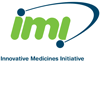€196 million Pan-European drug discovery platform launched
Posted: 7 February 2013 | | No comments yet
Large pharmaceutical companies join forces with small and medium-sized enterprises (SMEs) and academia in an IMI-supported public private partnership (PPP) to enhance early drug discovery and so address the ever-increasing need for innovative therapeutics to tackle unmet medical needs…


The European Lead Factory, a novel platform for innovative drug discovery, was launched today by an international consortium of 30 partners. This partnership, the first of its kind, is supported by the Innovative Medicines Initiative (IMI) and creates unprecedented opportunities for the discovery of new medicines by providing public partners with an ‘industry-like’ discovery platform to translate cutting-edge academic research into high-quality drug lead molecules on a scale and speed that was not possible previously.
This will be made possible in part through access to an exceptional collection of small molecules. Part of this collection will be contributed by pharmaceutical companies, and the other part will be a newly synthesized compound collection built by the SMEs and academic institutions using the integrated knowledge of all consortium partners and through open innovation and crowd sourcing. Screening of this compound collection will be performed within the pharmaceutical companies and by a newly-established European Screening Centre. Stakeholders, including patient organisations and global health initiatives, are invited to contribute their knowledge and networks to the consortium to elevate the outcome of the early drug discovery process and to be part of the establishment of a new sustainable platform for early drug discovery.
Pharmaceutical companies have vast libraries of compounds which can be screened in the hunt for potential medicines. Usually, access to these compound libraries is highly restricted. As part of the European Lead Factory, the 7 participating pharmaceutical companies will contribute at least 300 000 chemical compounds from their corporate chemical collections. A library of an estimated additional 200 000 novel compounds will be developed jointly by academia and SMEs. Together, the two libraries will form a Joint European Compound Collection consisting of up to half a million compounds that will be accessible to all project partners and to public organisations offering promising new targets for drug discovery screening. These target proposals will be selected through competitive calls.
An equally important part of the European Lead Factory is the European Screening Centre, which will assist public contributors of novel targets in the development of tests amenable to the requirements of industrialised screening methodology. Both the sites in Scotland and the Netherlands will run state of the art facilities for compound logistics and high throughput screening to respectively handle the 500 000-strong compound library and to evaluate new compounds that are active against the novel targets.
The total budget for the project amounts to around €196 million. Of this, €80 million comes from the European Commission’s Seventh Framework Programme for Research (FP7), and €91 million is provided as in kind contributions from the participating companies that are members of the European Federation of Pharmaceutical Industries and Associations (EFPIA). The remaining €25 million comes from other contributions from the non-EFPIA participants.
If the project proves successful during its initial five year funding period, the European Screening Centre and the teams of SMEs and academic institutions aim for a sustainable role in drug discovery and the future growth of drug development in Europe.
IMI Executive Director Michel Goldman commented: ‘IMI is very excited by the launch of the European Lead Factory. This unique project is an excellent example of how a public-private partnership can transform the way in which the pharmaceutical sector identifies new medicines. For the first time, it will give European researchers unprecedented access to industry chemical collections and facilitate the translation of their findings into actual treatments for patients. This project will not only advance the chances of success in the discovery of new medicines by European researchers, but also add value by building research capacity in Europe.’
Hanno Wild, Senior Vice President and Head of Candidate Generation & Exploration at Project Coordinator Bayer HealthCare Global Drug Discovery, says: ‘The European Lead Factory is an outstanding example of a project in which public-private partnerships enable collaborative drug discovery. The platform brings together academia and industry as well as small and medium enterprises in a unique partnership aiming to discover innovative medicines. Bayer is committed to further develop this novel platform by providing decades of experience in drug development. The joint efforts of the consortium will support drug discovery and hopefully generate new therapies for patients.’
The Netherlands-based non-profit TI Pharma will facilitate the governance of this new project and is responsible for the scientific management of the screening centre. Scientific Director of TI Pharma and Head of Screening of the European Lead Factory Ton Rijnders: ‘Establishing this public private partnership brings unprecedented opportunities to develop a sustainable ground breaking drug discovery platform based on superior input and output by connecting top notch science, decades of experience in drug discovery and development and the agility of SMEs.’
Dimitrios Tzalis, CEO of Taros Chemicals and Head of the European consortium’s chemistry effort, affirms: ‘The experience of creating an unparalleled drug discovery platform consisting of leading European SMEs and academia has been very exciting and compelling, to say the least. This platform of knowledge and experience, based on novel chemistry and innovative targets will be fortified by the pharmaceutical industry’s expansive knowledge in drug development, resulting in a giant surge forward in drug development.’




